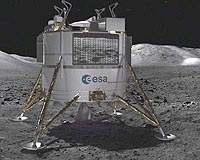 |
Greenbelt MD (SPX) Dec 17, 2010 The December holiday sky show doesn't stop with the Geminid meteor shower - this year, the moon is also bringing a holiday gift. In the very early morning of December 21, or late night of December 20, depending on your time zone, a total lunar eclipse will make a dramatically colorful appearance - from bright orange to blood red to dark brown and perhaps gray. The next total lunar eclipse will begin when the moon moves into Earth's penumbral shadow on December 21, 2010 at 5:29 UTC. This last lunar eclipse of 2010 is especially well placed for observers throughout North America. The eclipse occurs as the moon passes through the northern portion of Earth's shadow, just four days before perigee, when the moon is closest to Earth. Want to know more? Lunar experts from NASA's Marshall Space Flight Center will be hosting two live Web chats to discuss the eclipse. On Monday, Dec. 20 from 3-4 p.m. EST, Dr. Rob suggs will answer your questions. Later on Dec. 20, make plans to to stay "up all night" with astronomer Mitzi Adams at she answers your questions from midnight to 5:00 a.m. EST. Joining the chat is easy. Simply return to this page a few minutes before each of the chats. The chat module will appear at the bottom of this page. After you log in, wait for the chat module to be activated, then ask your questions. See you in chat!
Live Video/Audio Feed
More About the Chat Experts: Rob Suggs and Mitzi Adams In her 22-year career at the Marshall Space Flight Center, Mitzi Adams has conducted research for a variety of solar missions, including work with Marshall's vector magnetograph, a pioneering instrument that studied magnetic fields in sunspots; SOHO, a mission to study the sun from its deep core to the outer corona; and Hinode, a project to improve our understanding of the sun's magnetic field and the mechanisms that drive solar eruptions. As a guest lecturer for science courses at the University of Alabama in Huntsville, Adams works to sustain enthusiasm and engagement at the college level. Janet Anderson, Huntsville, Ala.
Share This Article With Planet Earth
Related Links Join the chat Marshall Space Flight Center Mars News and Information at MarsDaily.com Lunar Dreams and more
 A Softer Landing on the Moon
A Softer Landing on the MoonSydney, Australia (SPX) Dec 09, 2010 Getting something onto the surface of the Moon intact is always a challenge. Gravity pulls you in. There's no atmosphere to slow you down. Parachutes don't work. Your only hope is to use thrusters to slow down, and gently touch the surface. This approach has worked fine for soft landers in the past. All you need is a clear, safe place to land. What, then, do you do when the ground beneath ... read more |
|
| The content herein, unless otherwise known to be public domain, are Copyright 1995-2010 - SpaceDaily. AFP and UPI Wire Stories are copyright Agence France-Presse and United Press International. ESA Portal Reports are copyright European Space Agency. All NASA sourced material is public domain. Additional copyrights may apply in whole or part to other bona fide parties. Advertising does not imply endorsement,agreement or approval of any opinions, statements or information provided by SpaceDaily on any Web page published or hosted by SpaceDaily. Privacy Statement |